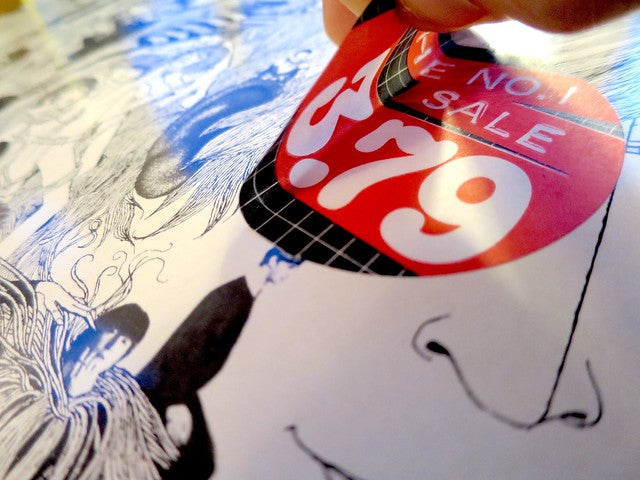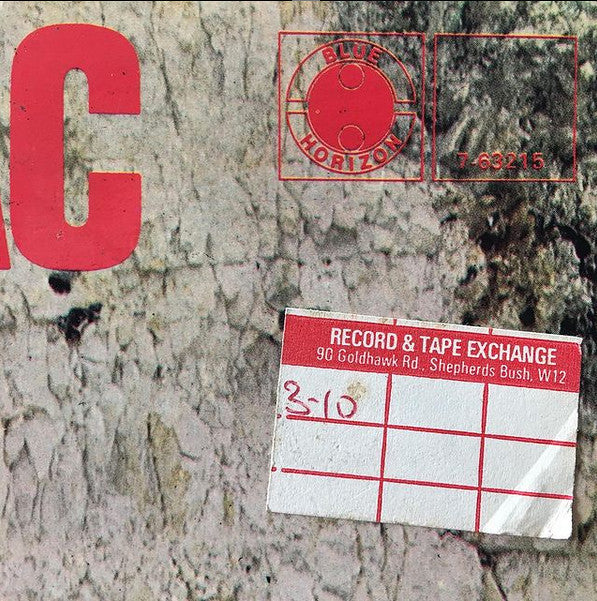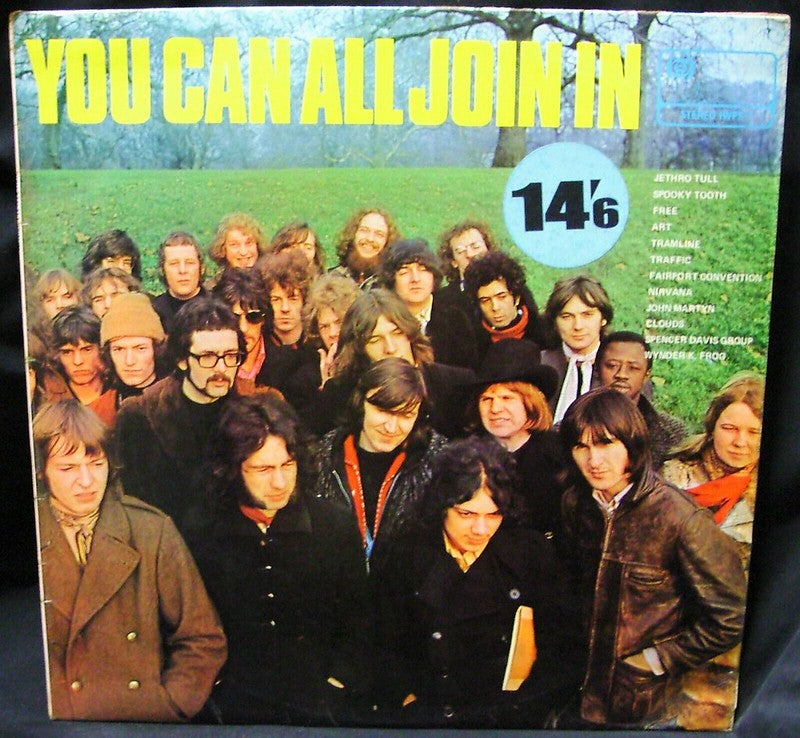No Products in the Cart
When it comes to record sleeves, stickers are the bane of my existence. Every record has a history all its own, and many of the experiences a record sleeve has leave a mark for life. Being written on in biro, dinged corners, creases and rips…not much you can do about any of that. Old price stickers are another matter though, and lots of record sleeves have them. My impulse is always to remove them, but not all stickers are made of the same stuff, and neither are all record sleeves for that matter. When it comes to removing old stickers, laminated sleeves are your best friend, and textured sleeves are your worst enemy.
A lot of the records I acquire in the UK are from well-known stores, and you come to know the stickers and their tendencies for destructive adhesion very well. I never worry when a record has one of these large-format HMV or Our Price stickers on them. They peel off pretty easily. This HMV one came off without a second thought, having been stuck on this copy of Revolver for three decades.

The real culprits are stickers from the Record And Tape Exchange and the small grey Our Price stickers. When these were first affixed to LPs, they probably came off quite easily, but little thought was given to how hard the sticker would be to remove many years later.

I was lucky with this Fleetwood Mac LP. The sleeve was laminated, and with some cajoling the sticker came off, otherwise I might not have even attempted it. It’s always heartbreaking when you start removing a sticker only to find that it’s taking the top layer of the sleeve off with it.
So what are the tools of the trade? I’ve always used lighter fuel and a medium gauge guitar pick. If you have long, lustrous fingernails (I don’t), they’ll do the trick, but it’s inadvisable if you’re unstickering a pile of records. And if you’ve ever had the experience of being too boisterous with a sticker and had it jut into the tender skin under your fingernail, then you’ll understand why I prefer a guitar pick. Some people will recommend using a scalpel blade (exacto-knife), but they’re fools, DAMN FOOLS I TELL YOU! It’s much too easy to damage the sleeve with those things. A guitar pick has just the right amount of heft, while remaining dull enough to not damage the sleeve so long as you’re careful.
Here’s a little demonstration video. I would have liked to have shown you my expertize with a gnarly Our Price sticker, but I’ve already cleaned and graded almost all my current stock, and that includes removing stickers. You’ll notice I’m being pretty generous with the lighter fuel, and that’s mostly because it’s a laminated sleeve.
Unsatisfied that the above video suitably demonstrated the process, I looked through my own collection for a more treacherous sticker, and I found one in this Peter Dunn sticker on a textured Paul Simon sleeve:
Some people like to leave price stickers on records. It reminds them how much they paid for it, or where they bought it. There’s one price sticker I always leave on, and that’s this charming sticker you often find attached to the cover of Island’s 1968 sampler LP You Can All Join In:

The price sticker is not from a record shop, rather it was placed on the album’s sleeve by Island as a “recommended retail price”. I also like that it’s in “old money”: 14’6, or 14 shillings and sixpence (£0.72), which at the time would have been equal to about a dollar. The album’s sleeve has always been a curiosity. It was an early Hipgnosis design and it features a shot of every Island recording artist that could be coaxed out of bed and down to Hyde Park on a chilly Sunday morning at the ungodly hour of 7.30am.
In December 2002 I sold a copy of this LP to Glenn Cornick, the late great founding bass player from Jethro Tull (back row, left hand side, with glasses). He’d lost his original copy and wanted one for his website. Here’s the copy he got from me. There’s no price sticker on it. Maybe he took it off with some lighter fuel and a guitar pick.